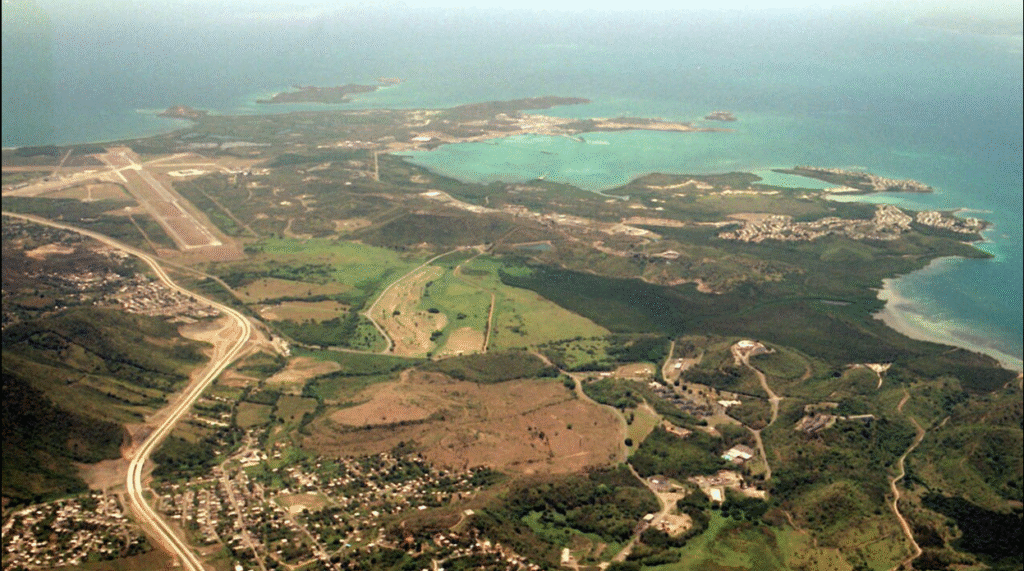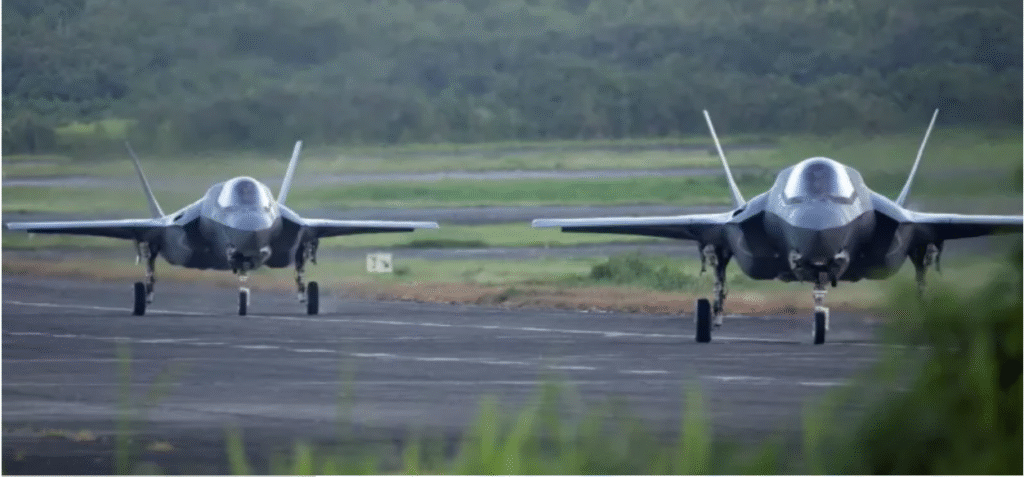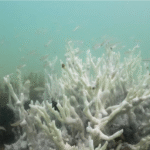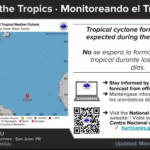SAN JUAN — U.S. Naval Station Roosevelt Roads in Ceiba, Puerto Rico is officially back!
“Rosy Roads,” as it was affectionately known, was officially closed on March 31, 2004.
The closure followed years of protests over U.S. Navy bombing practices on the nearby island of Vieques, which led to the Navy ceasing its exercises and the subsequent decision to shutter the base.
For slightly more than two decades, Roosevelt Roads was a ghost with an 11,000-foot runway—too long to forget, too useful to ignore. And in September 2025, all that changed.

The site operates today as José Aponte de la Torre Airport, a public use airport.
F-35 stealth fighters were photographed landing at the former Navy complex in Ceiba, with helicopters, Ospreys, and transports cycling through.
Pentagon spokespeople haven’t announced a formal force posture change, but aircraft are operating from the field now. That’s not a rumor; it’s on camera.
History
In 1919, future US President Franklin D. Roosevelt, then Assistant Secretary of the Navy, toured Puerto Rico, visiting Ceiba. When he returned to the White House, he expressed a liking for the terrain where the base was to be located.
This was during the World War I-era, and the US could benefit from an airfield in Ceiba. While Puerto Rico is a Commonwealth, its territorial rights belong to the US, which made it feasible for the US government to build an air base in Ceiba
It took many years for the US to become convinced of the need for an air base in Ceiba. When Adolf Hitler and Nazi Germany began to invade other European countries, the US, led by then President Roosevelt, considered the idea of a naval air station in Ceiba.
With war in the European and Pacific theaters, they saw an airbase in the Caribbean as necessary. President Roosevelt ordered the creation of the base in 1940. In 1941, $50 million (equivalent to $799 million in 2024) was appropriated to develop a protected anchorage in the sea area between Puerto Rico and Vieques, an area later named Roosevelt Roads by Navy Secretary Frank Knox on May 15 1941. On August 22, 1941, President Roosevelt signed a naval works among other things, authorized another $21.97 million (equivalent to $470 million in 2024) for a protected fleet anchorage at Roosevelt Roads
In 1957, it was upgraded to Naval Station status. Fort Bundy was located there, but it crossed over to parts of Vieques, a fact that became important in the future. A US military mission, the M3, was located there. It was part of the “Naval Computer and Telecommunications Station, Puerto Rico Base Communication Department.”
M3 had a fleet center, a technical control facility and a Tactical support communications department among other things. The M3 was designated to help Puerto Rico, the US and other Caribbean and Latin American countries to deal with drug trafficking, illegal immigration and other problems. The main purpose of the base was tactical support for land/sea/air maneuvers at the Naval Training Range in Vieques.
In 1969, the US Navy established Camp Moscrip which held a rotating US Navy Construction Battalion (Seabee).
Within the industrial area the drydock, a bombproof power plant, a sewage pumping station, and a machine shop were completed. The drydock, 1100 by 155 feet, and built in the dry, was first used in July 1943. The power plant, a bombproof structure with 4-foot-thick concrete walls, was equipped with two 5,000-kw steam-driven generators. The drydock was dedicated on 15 February 1944, and the Bolles Drydock, in memory of Captain Harry A. Bolles, (CEC) USN, who was killed in Alaska in World War II.
In January 2003, Admiral Robert J. Natter said that, with the upcoming closure of the Naval Training Range in Vieques, Roosevelt Roads was no longer needed by the Navy. Later that year, a military appropriations bill required the Secretary of the Navy to close within six months of the enactment of the act.
The base officially closed on March 31, 2004. At the time, there were nearly 1,200 active-duty officers and sailors at Roosevelt Roads. United States Special Operations Command South moved from Roosevelt Roads to Homestead Air Reserve Base in Miami–Dade County, Florida. U.S. Naval Forces Southern Command moved from Roosevelt Roads to Mayport Naval Station near Jacksonville, Florida. Naval Mobile Construction Battalion (NMCB) 74 (Seabee) moved from Roosevelt Roads to Little Creek, Virginia. When Roosevelt Roads closed, the only U.S. naval base in the Caribbean was the Guantanamo Bay Naval Base. From the time that Congress voted to close the base until its closure, Roosevelt Roads closed faster than any other military installation on US soil in several decades. After its closure, 200 sailors and civilians remained to help in the transition from a naval base to a naval agency coordinating the closing process.
Of the former base’s property, about 30% was transferred to the government of Puerto Rico and its municipalities, 40% became a wetlands preserve, and the remainder was offered for sale at public auction.
Present day
As of October 2025, the U.S. Department of Defense has not officially reactivated Naval Base Roosevelt Roads on a permanent basis. However, the base’s airfield has become operationally active again as a temporary staging area for U.S. military operations in the Caribbean.
Key details of the base’s current situation:
- Active military use: The airfield has seen a significant increase in activity since September 2025, with F-35B stealth fighters, Osprey tiltrotors, and large transport aircraft like the C-5 and C-17 using the runway.
- Mission: This activity is part of a flexible forward deployment for operations such as counter-drug missions and deterrence signaling. The deployment aligns with heightened tensions in the region, particularly involving Venezuela.
- No permanent reopening: Pentagon officials have indicated there are no current plans to permanently reopen the base. Its current use is for short-term operational needs.
- Local debate: The sudden, unofficial reactivation has sparked a debate in Puerto Rico. Some local officials support the move for its potential economic benefits and strategic importance, while others are wary, referencing past social issues related to the base. The Puerto Rico Senate has even introduced a resolution to study the potential for military reuse.
- Cleanup continues: Environmental restoration and cleanup activities from the previous naval operations, overseen by the Navy’s Base Realignment and Closure (BRAC) program, are still underway.
- Simultaneous redevelopment: The site continues to undergo civilian redevelopment projects, including plans for residential and commercial spaces, indicating that military and private interests are currently coexisting.
Aftermath
The official name was U.S. Naval Station Roosevelt Roads, and it was officially renamed Naval Activity Puerto Rico (NAPR) after its closure as an active naval station in 2004. While the base was decommissioned, the site has since been re-purposed for military use, including recent counter-drug missions.
- Official Name: The official name was U.S. Naval Station Roosevelt Roads.
- Current Name: The name “Naval Activity Puerto Rico” is used for the current, smaller-scale military operations at the site.
- Historical Context: The base was commissioned in 1943 and officially closed as an active naval station in 2004.
- Decommissioned Status: The facility was sold and disposed of in 2004.
- Recent Activity: The former base has been repurposed and is now used for military operations, such as counter-drug missions, as of September 2025.



